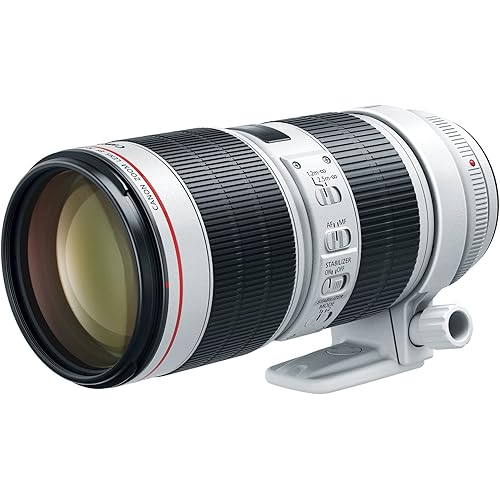







Buy Now, Pay Later
- – Up to 36-month term if approved
- – No impact on credit
- – Instant approval decision
- – Secure and straightforward checkout
Ready to go? Add this product to your cart and select a plan during checkout.
Payment plans are offered through our trusted finance partners Klarna, Affirm, Afterpay, Apple Pay, and PayTomorrow. No-credit-needed leasing options through Acima may also be available at checkout.
Learn more about financing & leasing here.
Selected Option
FREE refund/replacement until Jan 31, 2026 Learn more
To qualify for a full refund, items must be returned in their original, unused condition. If an item is returned in a used, damaged, or materially different state, you may be granted a partial refund.
To initiate a return, please visit our Returns Center.
View our full returns policy here.
Recently Viewed
Color: Black
Size: 3.5 x 4.2 x 4.2 in
Features
- OS functionality and newly designed HSM for success on any shoot
- Lens barrel designed for high rigidity
- This all-new 24-70mm F2.8 lens from SIGMA delivers the performance and functionality that help pros succeed in news, nature, and many other fields of photography.
Description
The large-diameter standard zoom ideal for today’s ultra-high-megapixel digital cameras. Three SLD (Special Low Dispersion) glass lens elements and four aspherical lens elements help minimize optical aberrations
Brand: Sigma
Focal Length Description: 24-70mm F2.8
Lens Type: zoom
Compatible Mountings: Canon EF
Camera Lens Description: 19 Elements in 14 Groups
Product Dimensions: 4.24 x 3.46 x 3.46 inches
Item Weight: 2 pounds
Item model number: 576954
Batteries: 1 12V batteries required.
Is Discontinued By Manufacturer: No
Date First Available: August 8, 2012
Manufacturer: Sigma Corporation of America
Frequently asked questions
Top Amazon Reviews
🚀 Abunda's Overview
This is our summary and key points to consider based on customer reviews.
The Sigma Art 24-70mm lens has been praised for its robust build quality, incredible versatility, vibrant colors and quick autofocus. Users find it to be a great value-for-money lens, with its strengths far outweighing the minor drawbacks. However, some users noted that it is slightly heavy and its autofocus sometimes misses in low-light conditions and at f2.8. Despite these, the lens is recommended for both professionals and beginners, particularly for portrait and sports photography.
Pros
- 📸 Robust build quality and comfortable handling
- 👍 Versatile range for various photography styles
- 🌈 Produces vibrant and sharp image quality
- ⚡ Generally quick and accurate autofocus
Cons
- ⚖️ Slightly heavier, potential strain during extended use
- 🎯 Autofocus might miss in low-light conditions or at f2.8.
- 🆚 Bokeh effect is not as creamy as some other lenses
Should I Buy It?
Yes, the Sigma Art 24-70mm lens is highly recommended for anyone looking to elevate their photography game without breaking the bank. Its performance and versatility make it a worthy addition to your lens collection despite a few minor drawbacks. Whether you're a professional or just starting out, this lens would be a valuable investment.





























